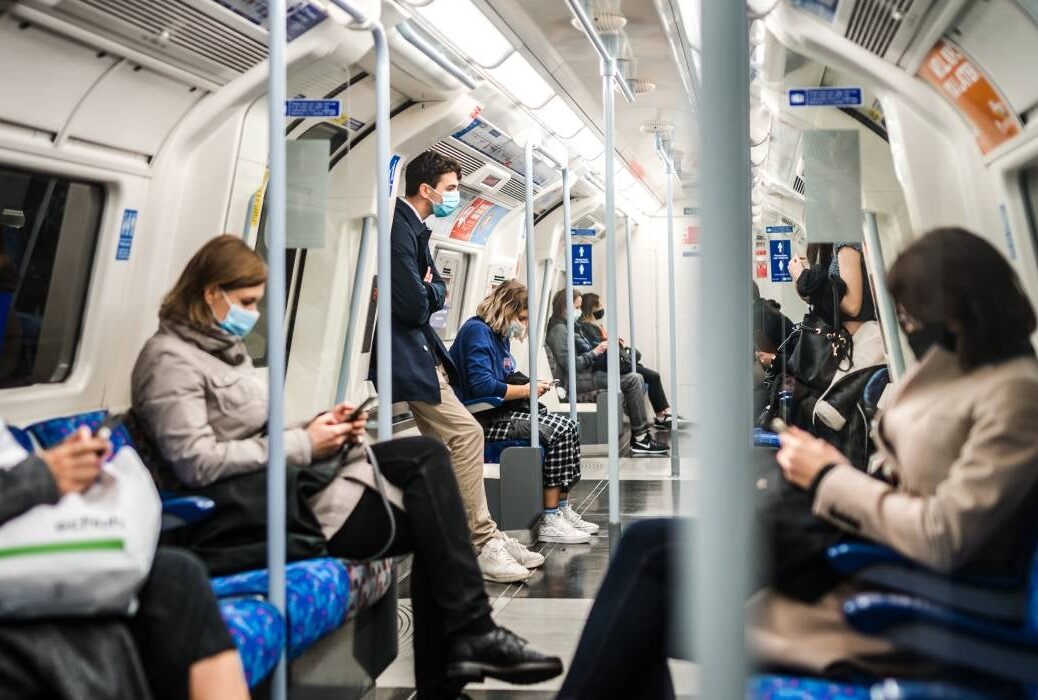
The thick lens of pandemic politics has distorted and magnified the public discourse on masks into an ideological battleground, separate from the science of infection prevention and control. Removing that lens and the heat it brings allows a more candid look at the science of mask wearing. There are two core questions to be considered: can masks be expected to work, and do masks work in the real world?
Most people have a grasp of what masks are trying to do. It is pretty intuitive – they block the exit and entry of virus from and into the airway. In order to reduce the risk of infection, the aim is to reduce the number of inhaled virus particles, which reduces the probability of one of them being able to set up an infection.
It’s a game of probabilities and chance. The fewer that make that home run from infected lung to non-infected lung, the lower the chances of an infection starting up. However, it is key to understand that this is no naked virus, but rather a virus wrapped and travelling in tiny volumes of respiratory secretions.
This gives us the answer to whether masks work – we can expect them to reduce the risk of infection based on the simple fact that they both prevent the onward travel of aerosols and droplets expelled by the wearer during talking, breathing, coughing and sneezing (source control) and prevent the inhalation of particles by another person (protection). They do this by filtration.
This is very well-attested by data from many laboratory studies. These clearly demonstrate that there is an important range in efficacy of different types of masks with best reductions achieved through higher-filtration materials and better-fitted masks, and this preventative effect increased when they are used by both the source and the exposed person.
From this data, masks seem like a very sensible and good idea. So why the controversy? The delay in implementation of masks in the Western world was largely driven by preconceived concerns regarding possible risks associated with the use of masks – ranging from touching them being a self-inoculation risk to difficulties breathing and an increase in risk-taking behaviours.
The argument against implementation was grounded on the laudable desire not to cause collateral harm. However, these concerns were without clear evidence. Widespread mask use in other countries has correlated with better disease control, and certainly did not give a sign of exacerbating the pandemic as would be expected if these fears were valid.
The question then of when to implement widespread public masking is also a pertinent one. Fine, they work in a lab-controlled setting, but how do they perform when in use out and about in the real world of face touching and risk-taking? At what point is it still worth the hassle?
At this stage in the pandemic there is consistent evidence in favour of wearing a mask, with some studies showing up to a 60 per cent reduction in Covid-19 in people who do, demonstrating a risk reduction on an individual level. In addition, with the fact that every individual infection averted has the potential to save a lot of knock-on infections (as seen through the exponential growth of pandemics), the benefits can be expected to be seen in whole populations. Indeed, if you compare US counties that have and have not introduced mask mandates, these mandates have reduced coronavirus-related deaths and hospitalisations. Whenever Covid-19 is circulating in a community, shared air poses a risk.
There are real considerations that have the potential to compromise the efficacy of mask use. However, these do not invalidate the concept of mask wearing but rather form an impetus for further problem-solving and innovation to optimise cost, comfort, communication issues, social acceptability, design of fit and breathability.
Wearing a mask is not a political statement – it is a considered and considerate action, reducing but not eliminating risks to others and oneself, additional to but not in replacement of vaccination and ventilation. It is not forever and always, just for when we want to filter shared air – like in the middle of a pandemic involving a respiratory airborne pathogen. Like now.
Christine Peters is a consultant clinical microbiologist and co-founder of Fresh Air NHS, a group of frontline health workers campaigning for better protection from Covid-19.



